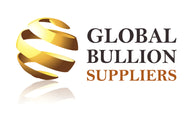The Austrian Philharmonic silver coin has quickly become one of the most widely-owned silver coins in the world. It’s popular with European investors and increasingly making its way across the Atlantic and into North American safes.
If you regularly buy silver coins, you’ve probably noticed that it’s become a lot harder to find bullion products from your usual sources. Over the past year, there has been a surge in demand for silver and gold coins as experienced bullion investors and newly interested buyers rushed into the market. According to The Guardian, sales of US Mint gold coins rose 258% last year, with plenty of spillover into other metals. Fears of economic turmoil and high inflation have sparked a pandemic buying craze.
That’s created a situation where the US Mint is unable to meet demand for coins, especially as it is bound by federal statutes to only purchase bullion at spot price. High demand has also impacted the Casa de Moneda de Mexico, the Perth Mint, and anyone who produces silver coins.
During periods of high demand and shortages, those who want to add to their silver collection may have to start looking at coins they haven’t considered yet.
Details About Philharmonic Silver Coins
Austrian silver philharmonic coins are made of 1 oz silver bullion with a .999 fineness (99.9% pure silver). It has a face value of €1.50, a diameter of 37 mm, and a thickness of 3.2 mm.
Designed by expert engraver Thomas Pesendorfer, the obverse displays the Great Organ located in Vienna’s Musikverein, a traditional concert hall of the Vienna Philharmonic Orchestra. This side also features information such as the year, face value, and silver content. The reverse features an arrangement of musical instruments, including a string bass surrounded by cellos and violins, as well as a Viennese horn, harp, and bassoon.
The coin is an homage not only to the Vienna Philharmonic Orchestra but to the Austrian capital’s rich musical history. Not only was Vienna home to Mozart, but a long list of composers, including Strauss, Beethoven, and Haydn all worked in the city during their careers. The font used on the philharmonic silver coin takes its inspiration from the Vienna Secession, an artistic movement in the late 19th century that championed innovation in artwork.
Philharmonic silver coins are an excellent example of a bullion product that encapsulates the history and culture of the country where it’s made. The silver philharmonic is as symbolic of Austrian identity as the United States’ bald eagle or Canada’s maple leaf, which are both featured on those countries’ own gold and silver coins. The Austrian Silver Philharmonic is an excellent example of the artistry of coinage and how a unique design can attract investors and collectors alike.
History of Austrian Philharmonic Silver Coins
The silver philharmonic was first introduced by the Austrian Mint in 2008, but its gold counterpart featuring the same design has been produced since 1989. Philharmonic silver coins are not the mint’s first, however. It was founded in 1194 AD, using ransom money from the captured King Richard of England during the Holy Crusades. Using the 12 tons of silver ransomed from the English king, the Austrian Mint produced 100,000 coins and initiated over 800 years of minting. The Austrian Mint is an important part of the history of European coinage.
Long before philharmonic silver coins, the mint was possibly best known for the Maria Theresa Taler. Minting began in 1740, and in fact, the Austrian Mint continues to produce them today. Unlike the silver philharmonic, it is only 83.3% silver, and one coin contains only 0.752 troy ounces of the precious metal, with the rest being copper. Nevertheless, it is still popular with collectors, and at one point was the official trading currency of German-speaking countries.
Is the Austrian Silver Philharmonic a Good Investment?
Philharmonic silver coins are some of the world’s most widely minted investment-grade coins. The philharmonic silver coin is regularly listed as one of the world’s most popular silver coins alongside US Silver Eagles, Canadian Silver Maple Leafs, the British Silver Britannia, and Chinese Silver Panda.
The popularity of the coin amongst silver buyers makes the silver philharmonic a safe bet when you want to sell. Liquidity is an important factor in bullion investing, and buying widely recognized sovereign coins is one of the best ways to make sure your assets have a ready market.
Like all bullion products in Canada, you do not pay sales taxes on Austrian philharmonic silver coins, and premiums tend to be reasonable. As an investor, you want to keep an eye on your costs and make sure that you’re buying the most cost-effective bullion available.
Trading Silver Bullion
Silver is an excellent addition to your portfolio, especially if you want a metal with more growth potential than gold and a commodity with growing industrial demand.
Silver buyers would do well to look far and wide for different products to add to their stacks, especially during times of bullion scarcity. You can learn more by booking a free bullion consultation with us and discuss your options. If Austrian philharmonic silver coins have not so far been on your radar, now is a great opportunity.
The other side of investing is knowing when and where to sell silver coins. The best option for owners of bullion coins is a bullion dealer unless your collection has some type of collectible value and you feel like you could earn more for the piece.
If you’re looking to retool your portfolio or cash in some investments, sell to us today. It makes sense to occasionally rebalance your portfolio and correct asset allotments. Trading in bullion helps you diversify outside of the stock market and tap into a unique asset. Whether you’re selling or buying, work with a reliable bullion dealer.

